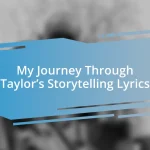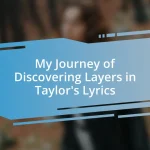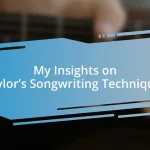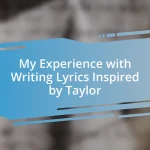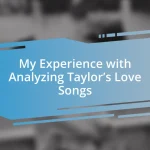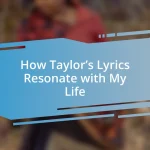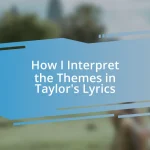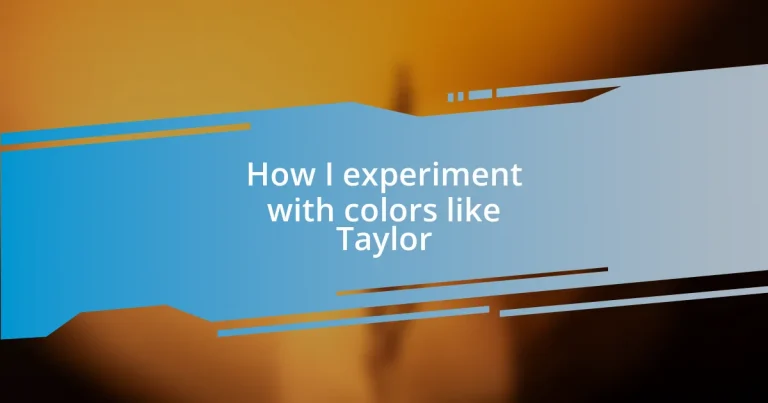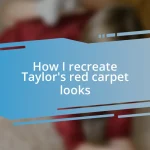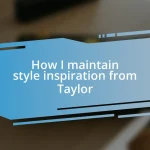Key takeaways:
- Color theory enhances artistic expression by demonstrating how color combinations can evoke emotions and meanings.
- Choosing a color palette can be inspired by the environment, and practical tips like starting with a focal color and testing in different lighting improve the selection process.
- Documenting color experiments through journaling and photography helps track artistic growth and sparks discussions that deepen understanding of color choices.
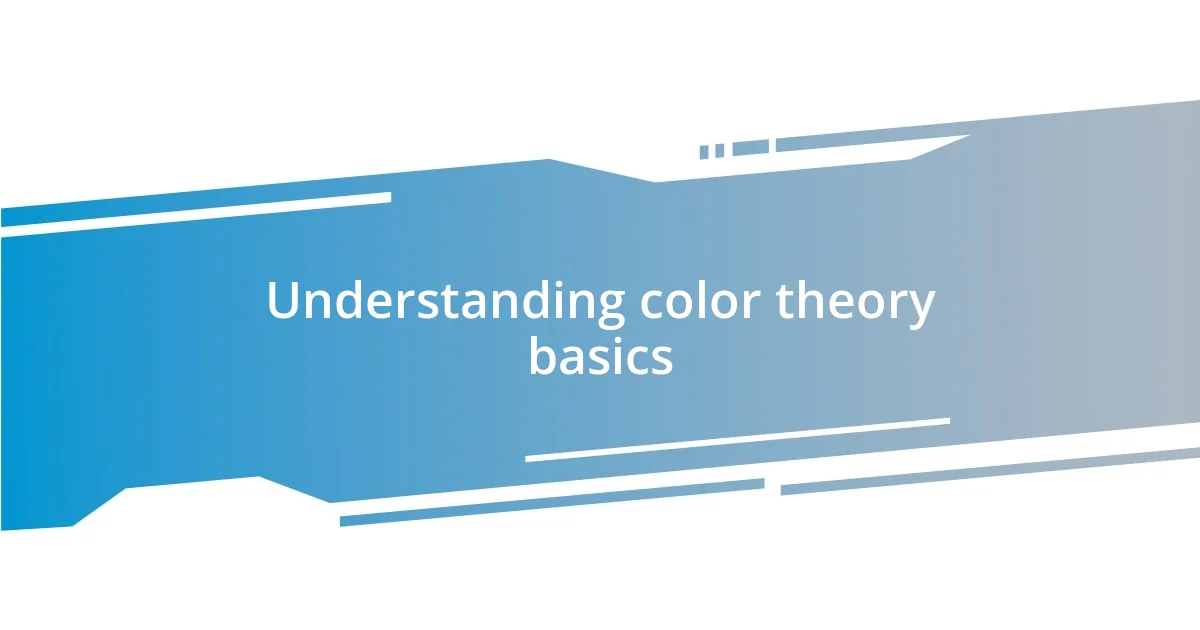
Understanding color theory basics
Color theory is an intriguing foundation that helps us understand how colors interact with one another. When I first started experimenting with colors, I was captivated by the primary colors—red, blue, and yellow. It amazed me how these three hues could combine in various ways to create a whole spectrum of colors, allowing for incredible artistic expression.
Think about how colors evoke emotions. For instance, I remember using a soft blue in one of my paintings, and that calmness it brought to the piece was instantly apparent. Have you ever noticed how a bold red can make your heart race? That’s the power of color theory—it provides us with tools to manipulate feelings through our artistic choices.
Complementary colors are another fascinating aspect. When I paired a vibrant orange with its complementary color, blue, in my last project, it created a striking contrast that really brought the artwork to life. It was a little surprising how much depth it added; have you ever tried using complementary colors in your work? It’s these discoveries that make diving into color theory so rewarding and enriching!
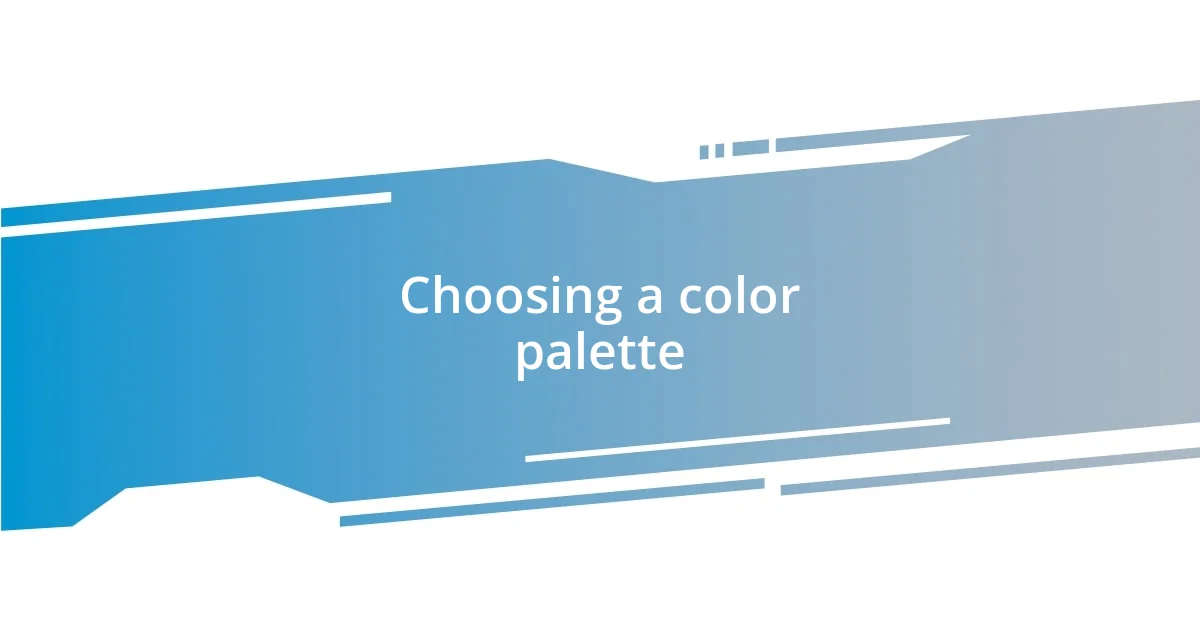
Choosing a color palette
When choosing a color palette, I often find inspiration in the world around me, whether it’s nature, architecture, or even fashion trends. I remember once walking through a park in autumn, completely mesmerized by the blend of warm oranges, deep reds, and earthy browns. That experience prompted me to create a piece that mirrored those autumn hues, capturing not just colors but the embrace of that season’s warmth and comfort.
Here are some practical tips I keep in mind when selecting colors:
-
Start with a focal color: Pick one color that resonates with you emotionally. This is often the foundation of your palette.
-
Explore analogous colors: These are colors next to each other on the color wheel, like yellows, oranges, and reds, which can create a serene, harmonious effect.
-
Consider triadic combinations: Choose three colors that are evenly spaced on the color wheel; this method brings energy and balance to your artwork.
-
Test in different lighting: Colors can dramatically shift in appearance, so checking them in various lighting conditions helps avoid surprises later on.
Finding the right palette can feel almost like crafting a personal narrative through color, which adds a unique touch to any project.
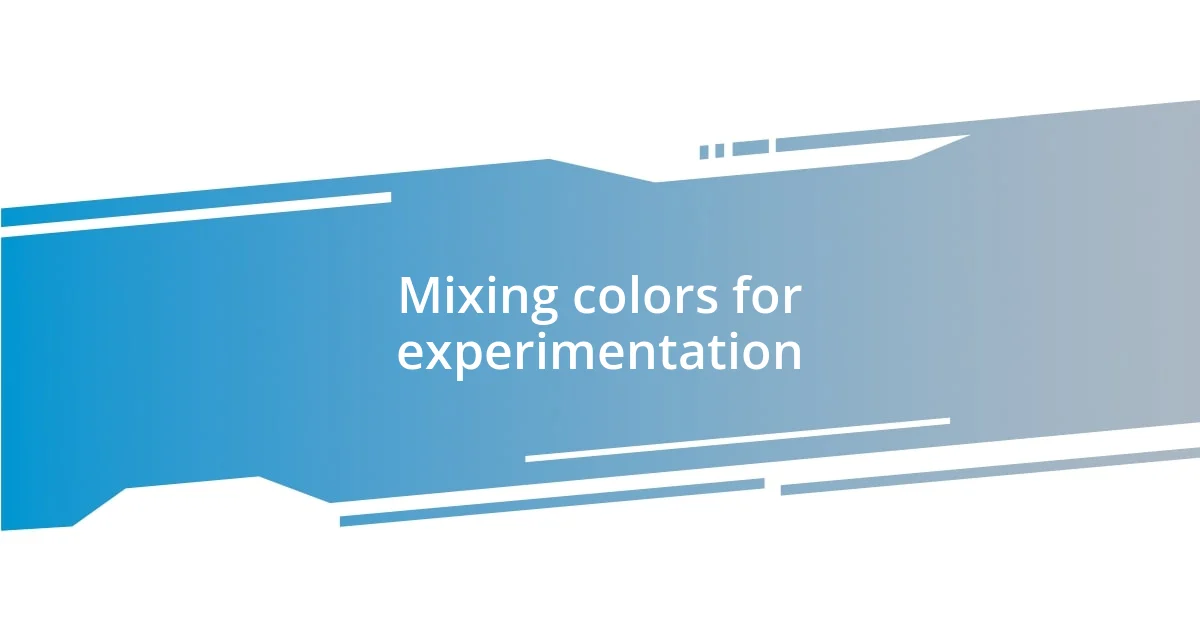
Mixing colors for experimentation
When I mix colors, I often think of it as creating a recipe. For example, one day, I decided to blend a vibrant turquoise with a soft lavender. The result was unexpected—a beautiful teal that felt both calming and vibrant at the same time. Have you ever combined colors in a way that surprised you? That’s one of the joys of experimentation; you never know what you might discover!
Another technique I often use involves layering colors. When I painted a sunset scene, I started with a base of deep yellow and gradually layered in reds and purples. Each layer added depth, and I remember being thrilled with how the colors blended together to mimic the real-life beauty of twilight. It’s a reminder that sometimes, the magic happens as colors interact over time.
Sometimes, I even try unconventional combinations, like mixing earth tones with neon shades. One of my favorite pieces featured a warm brown background with splashes of bright green. The contrast was jarring but intriguing, pushing the boundaries of traditional color schemes. Have you ever dared to experiment like that? That blend of opposing elements can evoke unique feelings, crafting a dialogue between the viewer and the artwork.
| Technique | Description |
|---|---|
| Direct Mixing | Combining two colors directly on the palette to create new shades. |
| Layering | Applying colors in layers to build depth and complexity. |
| Unconventional Combinations | Mixing colors that typically don’t go together to create striking contrasts. |
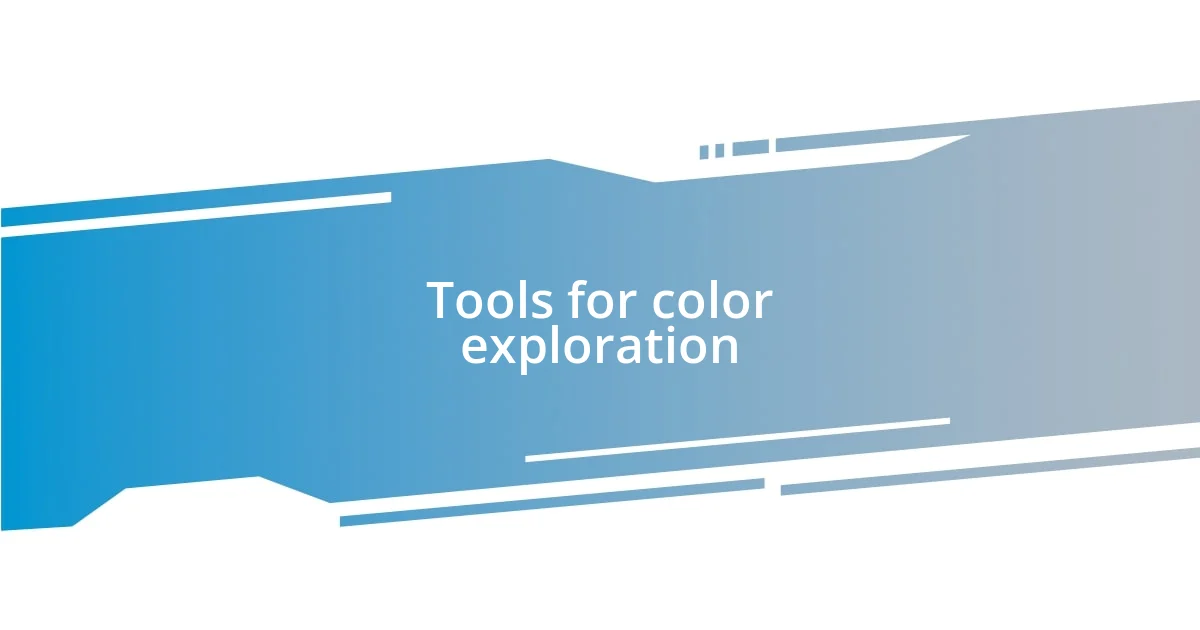
Tools for color exploration
When diving into color exploration, I find that my choice of tools can truly enhance the entire experience. One of my go-to tools is a color wheel. I remember how, as a novice, I struggled to make sense of color relationships. The moment I grasped that colors could complement, contrast, or harmonize, it felt like a light bulb went off in my creative process. Have you ever had a simple tool open up a world of possibilities for you?
Another invaluable resource I cherish is swatch books. They help me test and visualize colors in a way that a screen just can’t capture. One day, while flipping through my collection, I stumbled upon a faded pastel that pulled at my heartstrings. As I laid it against brighter hues, it sparked an unexpected composition that I later titled “Whispers of Spring.” Isn’t it fascinating how a little book of colors can evoke such memories and ideas?
Finally, I cannot stress enough the importance of digital tools for color sampling. Applications like Adobe Color Wheel allow me to experiment without the mess. One evening, while cooped up inside during a rainstorm, I created a palette based on the moody hues outside my window. Seeing those colors arranged on-screen ignited my creativity—sometimes, technology can mimic nature, don’t you think?
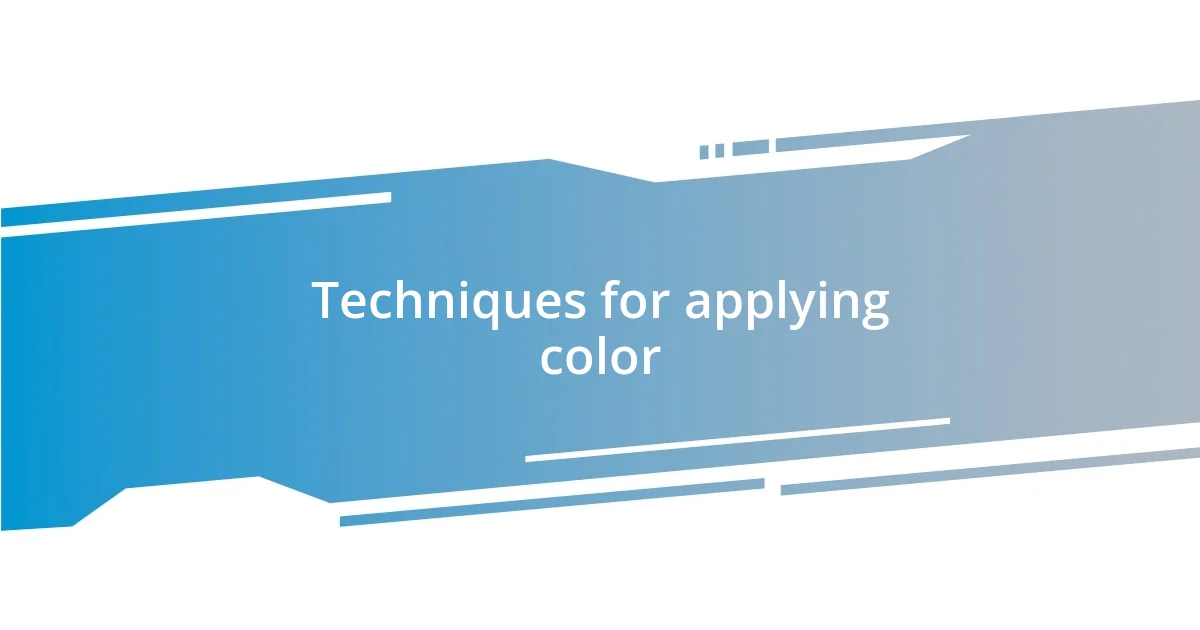
Techniques for applying color
I often find that applying color effectively requires an understanding of texture, too. When I was working on a series of abstract pieces, I experimented with different tools, from brushes to sponges. Using a sponge not only added a unique texture but also allowed the colors to blend in surprising ways. Have you ever considered how the tool you use can change the way colors interact?
Another technique I love is the dry brush method. A few years ago, I painted a stormy sea and used a dry brush to layer on the white foam. This technique made the colors pop, creating an energetic feel on the canvas that mirrored the chaos of the ocean. It’s remarkable how a simple choice can drastically alter the emotional impact of a piece, isn’t it?
Finally, I enjoy playing with transparency and opacity. In one of my recent landscapes, I mixed a transparent wash over a darker hue. This created a sense of depth and atmosphere, like the way sunlight filters through clouds. What I discover every time is that adjusting the opacity can lead to unexpected layers of meaning in my work, transforming the visual experience entirely. Have you ever experimented with the translucency of colors in your artwork?
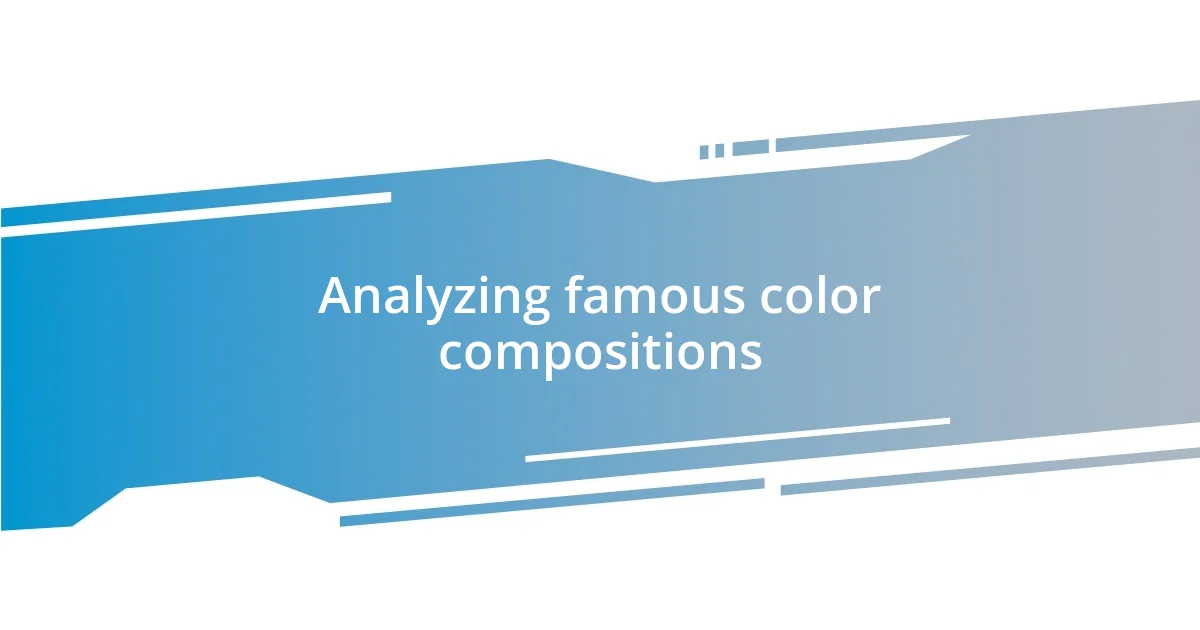
Analyzing famous color compositions
Famous color compositions often captivate us for their emotional resonance and visual impact. Take, for example, Van Gogh’s “Starry Night.” The swirling blues and vibrant yellows create a sense of movement and turmoil, reflecting Van Gogh’s emotional state. I remember the first time I stood in front of that painting—it felt like the colors were alive, almost pulling me into the night sky. Have you ever experienced a painting that seemed to speak to your emotions through its color choice?
When I examine Rothko’s color fields, I’m always struck by the simplicity and depth of his work. He used layers of color to forge a conversation between the viewer and the canvas. One afternoon, while analyzing his gradients, I found myself lost in thought, contemplating how such minimalism could evoke overwhelming feelings of tranquility and sadness. Isn’t it astonishing how a few colors can convey such complexity?
Exploring the bold palettes of Kehinde Wiley opened my eyes to how color can celebrate and empower identity. His work juxtaposes vibrant backgrounds with portraiture, creating a striking contrast that demands attention. I vividly recall the first piece that caught my eye; the colors almost sang to me, a symphony of confidence and pride. It made me question how my own color choices can speak to the stories I want to tell as an artist. What stories do your color choices narrate?
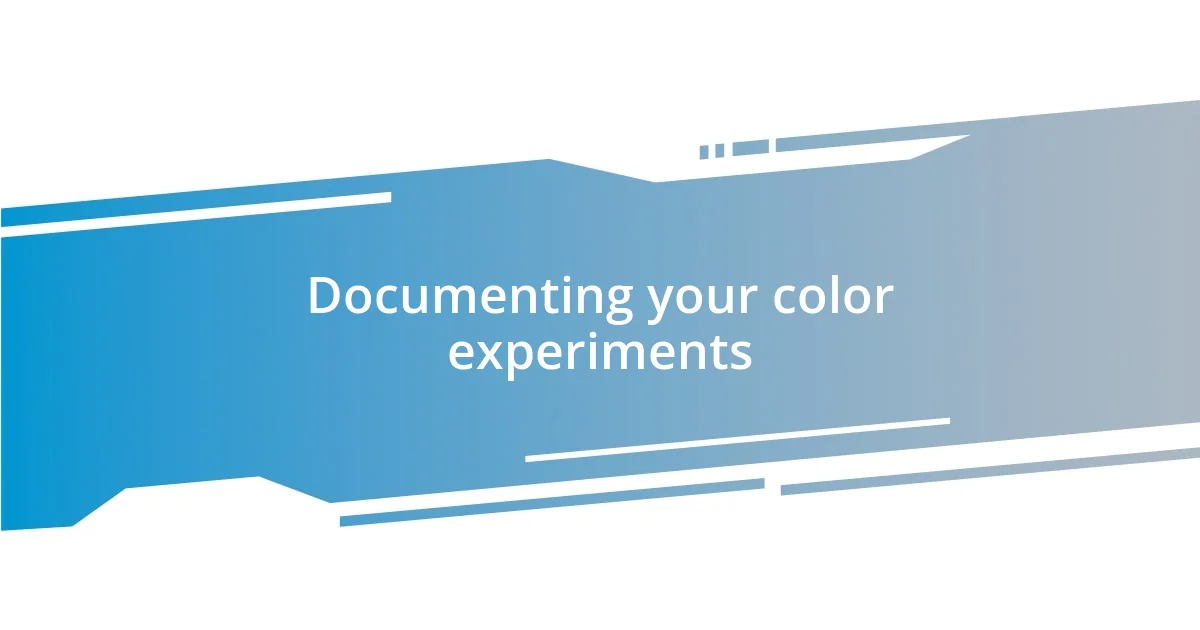
Documenting your color experiments
Keeping a detailed record of my color experiments has transformed my artistic process. I create a dedicated journal where I notate color combinations, tools utilized, and the emotions they evoke. For example, one time, I jotted down how a mix of burnt sienna and ultramarine elicited a sense of warmth and nostalgia—immediately taking me back to a sunlit afternoon in my grandmother’s garden. What colors have triggered vivid memories for you?
Photography also plays a vital role in documenting my color explorations. I enjoy snapping pictures of my palette and finished pieces, allowing me to visually track my evolution over time. Looking back at these images, I often rediscover the exciting mistakes or happy accidents—like that time I accidentally splattered bright orange on a canvas, which unexpectedly became a focal point. Have you captured your creative journey through photos or sketches?
When sharing my documentation with fellow artists, I find it’s a fantastic way to spark discussions about color theory and personal experiences. Last month, a friend pointed out how my bold use of teal in landscape paintings mirrors how I perceive tranquility in nature. This exchange deepened my understanding of my own choices, enhancing my creative journey. How have conversations influenced the way you interpret your color choices?
